50+ SAMPLE Landscaping Request for Proposal
-
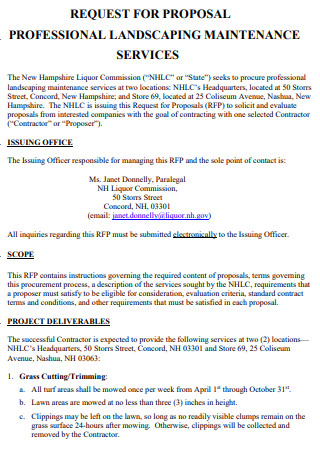
Professional Landscaping Request for Proposal
download now -
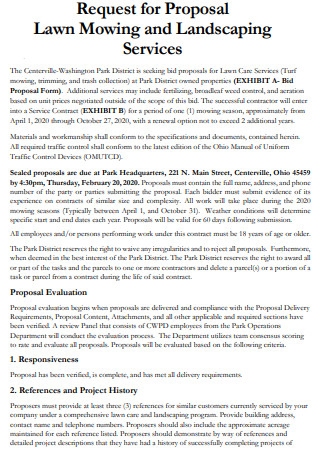
Lawn Mowing and Landscaping Services Request for Proposal
download now -
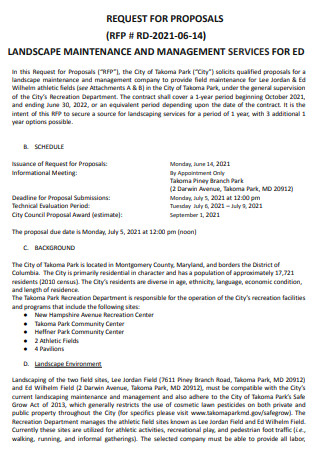
Landscaping Management Request for Proposal
download now -
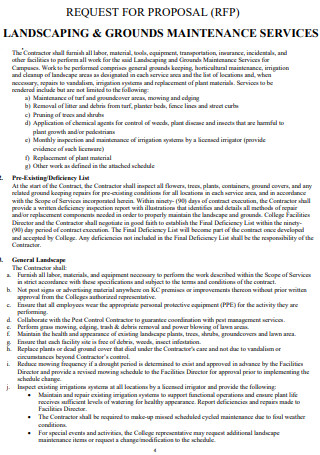
Landscaping Ground Request for Proposal
download now -
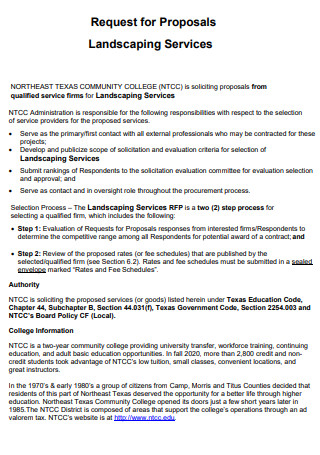
Landscaping Services Request for Proposal
download now -
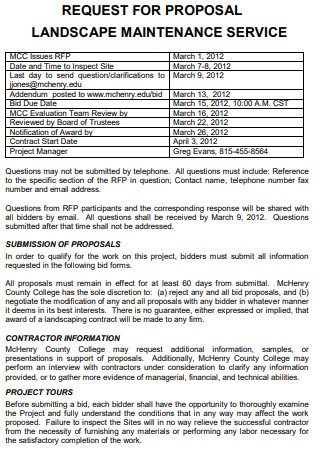
Landscaping Maintenance Services Request for Proposal
download now -
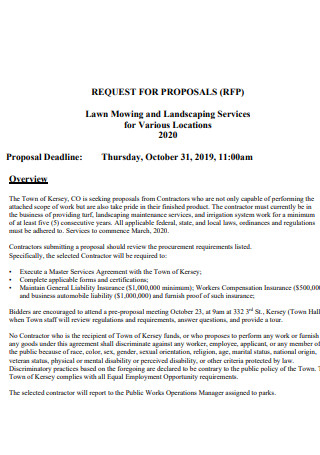
Lawn Mowing Landscaping Request for Proposal
download now -

Landscape and Maintenance Request for Proposal
download now -
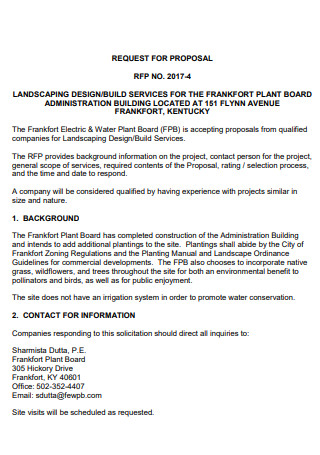
Landscaping Design Build Services Request for Proposal
download now -
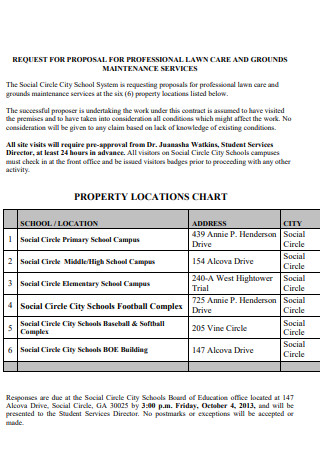
Landscaping Care Request for Proposal
download now -
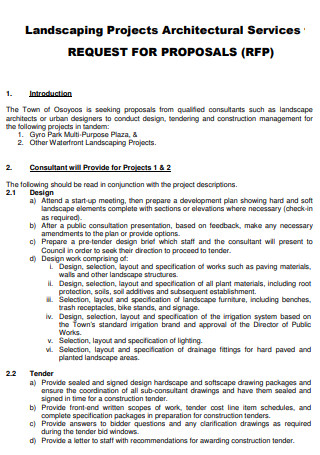
Landscaping Architectural Services Request for Proposal
download now -
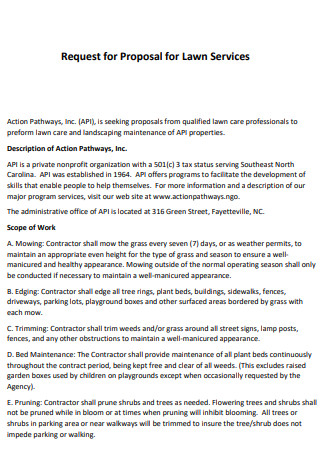
Lawn Service Request for Proposal
download now -
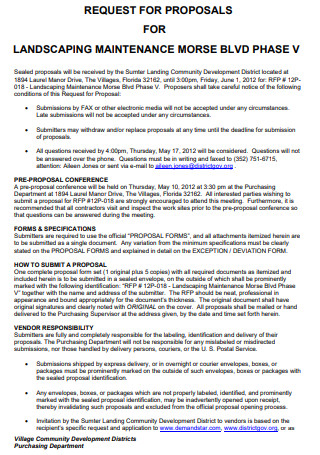
Landscaping Maintenance Morse Request for Proposal
download now -
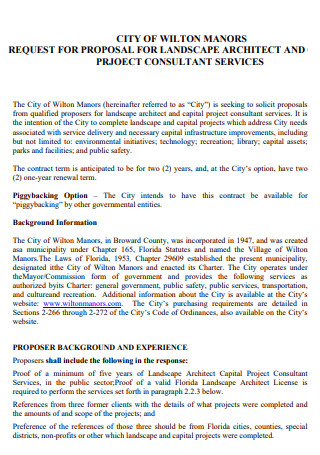
Landscaping Architectural Request for Proposal
download now -
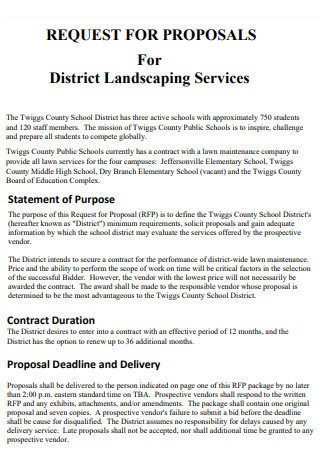
District Landscaping Services Request for Proposal
download now -
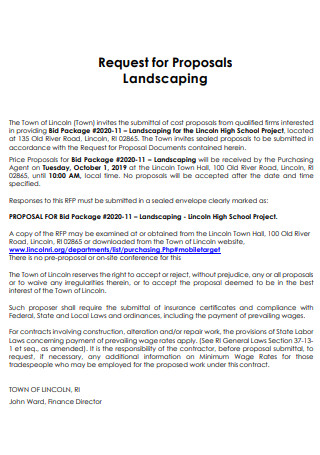
Landscaping Request for Proposal
download now -
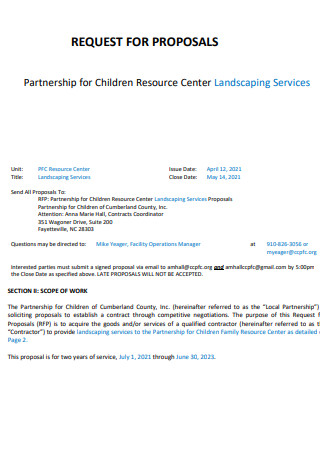
Center for Landscaping Request for Proposal
download now -
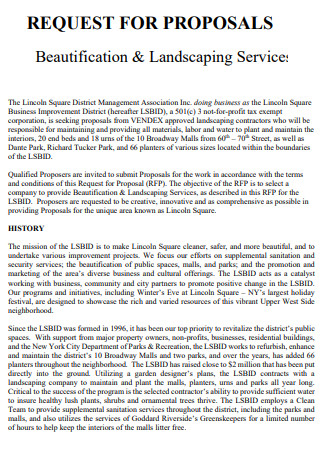
Beautification And Landscaping Services Request for Proposal
download now -
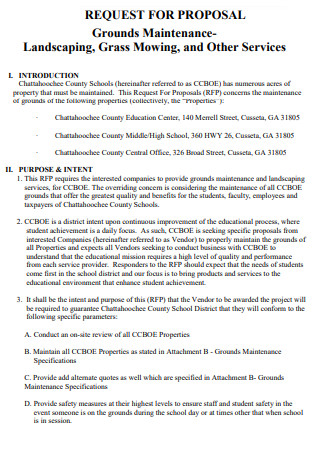
Landscaping Grass Mowing Request for Proposal
download now -
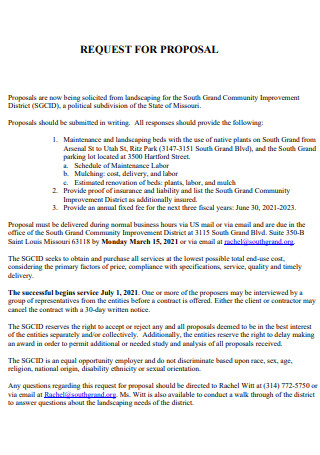
Landscaping Improvement Request for Proposal
download now -
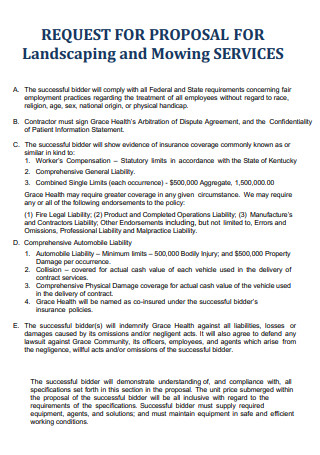
Landscaping And Mowing Services Request for Proposal
download now -

Ground Landscaping Request for Proposal
download now -
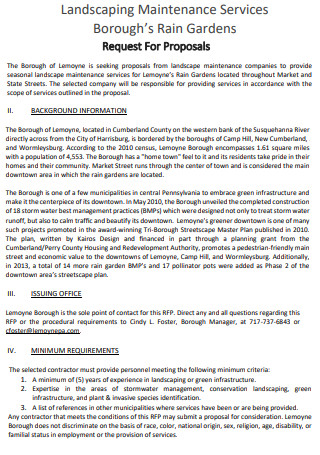
Sample Landscaping Services Request for Proposal
download now -

Landscaping Installation Request for Proposal
download now -
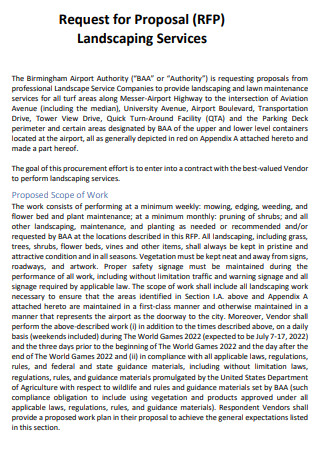
Simple Landscaping Services Request for Proposal
download now -
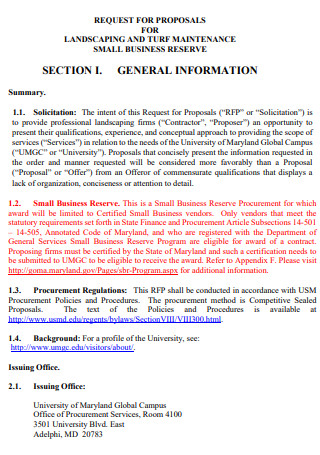
Landscaping Turf Request for Proposal
download now -
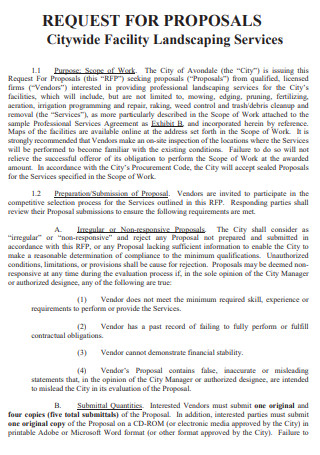
Facility Landscaping Services Request for Proposal
download now -
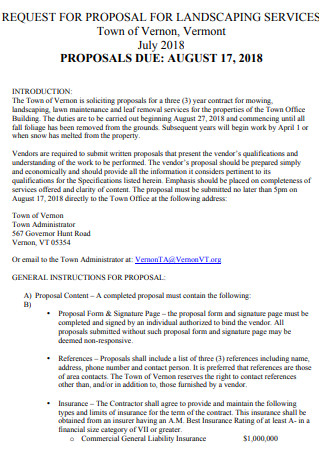
Basic Landscaping Request for Proposal
download now -
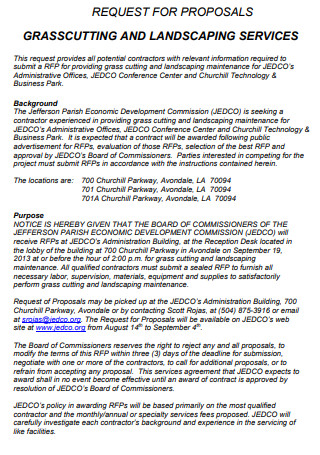
Grass Cutting Landscaping Request for Proposal
download now -
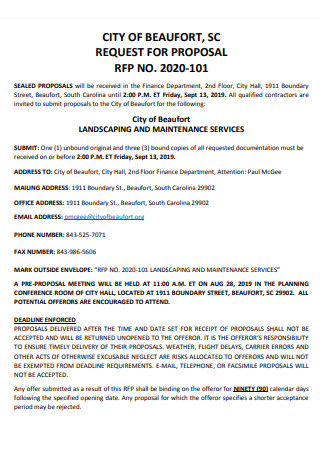
Standard Landscaping Request for Proposal
download now -

Free Landscaping Request for Proposal
download now -

Landscaping Lawn Request for Proposal
download now -
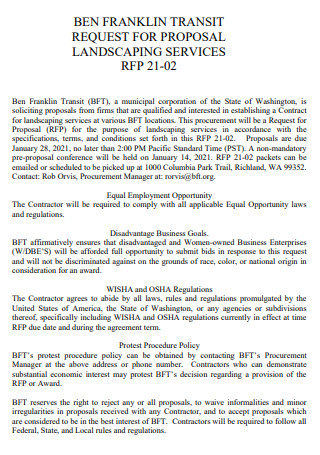
Formal Landscaping Request for Proposal
download now -
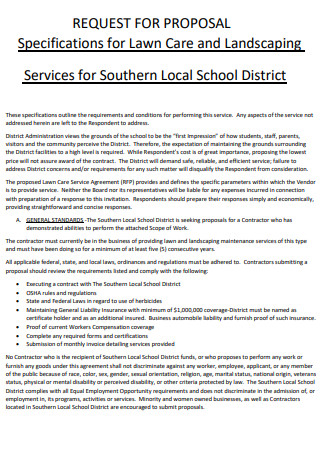
Specifications for Landscaping Request for Proposal
download now -

Lawn Care Landscaping Request for Proposal
download now -
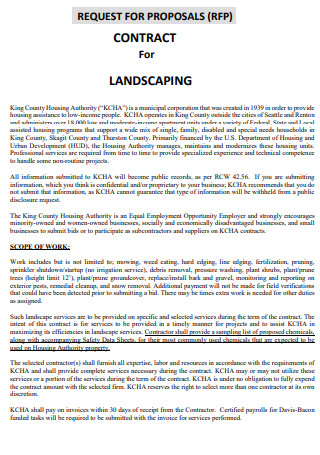
Contract for Landscaping Request for Proposal
download now -
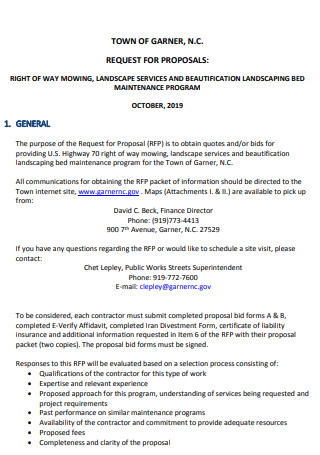
Landscaping Bed Maintenance Request for Proposal
download now -
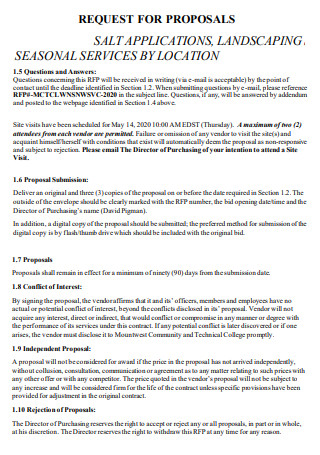
Landscaping Seasonal Services Request for Proposal
download now -
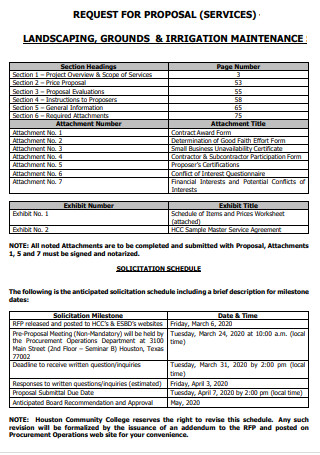
Landscaping Irrigation Request for Proposal
download now -
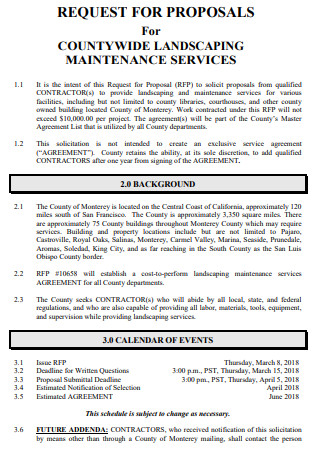
Countywide Landscaping Request for Proposal
download now -
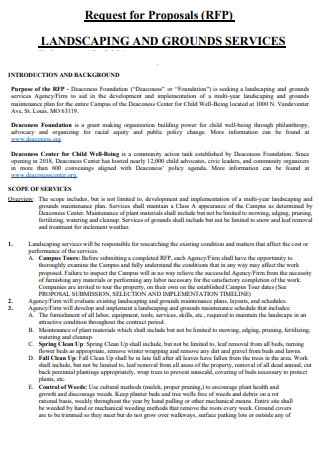
Landscaping And Ground Services Request for Proposal
download now -
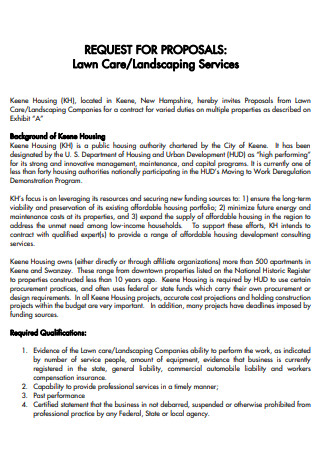
Lawn Care Landscaping Services Request for Proposal
download now -
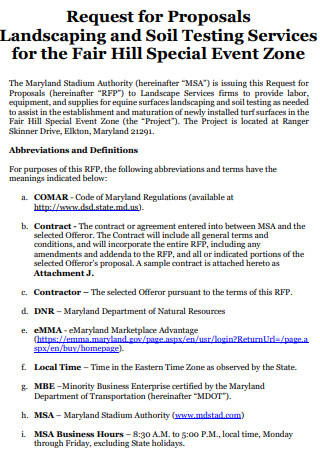
Landscaping and Soil Testing Services Request for Proposal
download now -
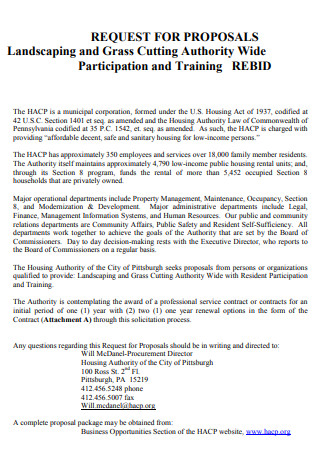
Landscaping and Grass Cutting Authority Request for Proposal
download now -
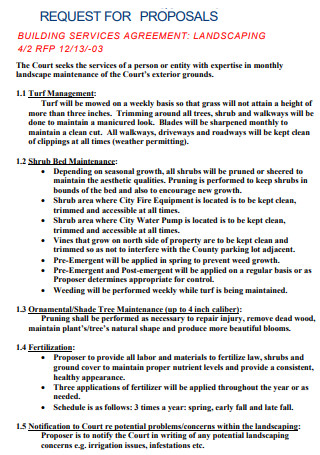
Agreement for Landscaping Request for Proposal
download now -
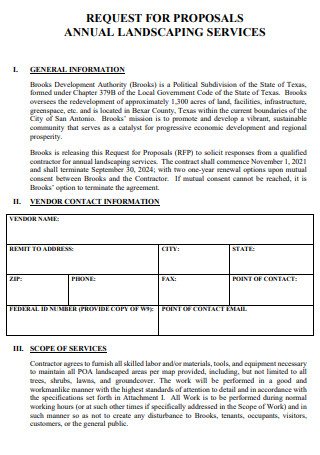
Annual Landscaping Services Request for Proposal
download now -
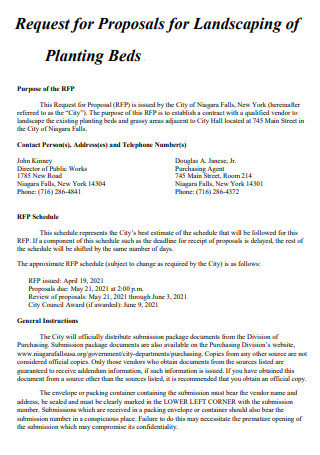
Landscaping of Planting Beds Request for Proposal
download now -

Landscaping Supplemental Request for Proposal
download now -

Landscaping at University Request for Proposal
download now -

Landscaping Design Request for Proposal
download now -
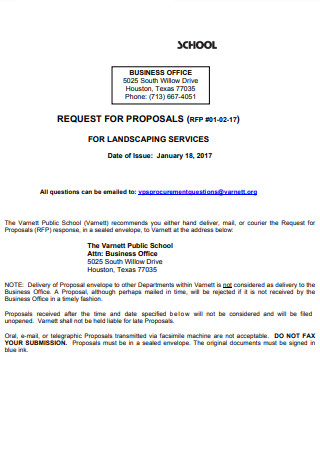
Landscaping Request for Proposal at School
download now
FREE Landscaping Request for Proposal s to Download
50+ SAMPLE Landscaping Request for Proposal
What Is a Landscaping Request for Proposal?
What’s Inside a Landscaping Request for Proposal?
Steps in Writing a Landscaping Request for Proposal
FAQs
What is the benefit of using a request for proposal document?
What is an example of a landscaping service?
What is an RFI and how different is it from an RFP document?
From the company’s perspective, whenever they manage to find out what the customer exactly needs for their property, they will then create a detailed document called an RFP (request for proposal) which details the landscaping needs of their customer, the scope of work that needs to be done and uses this document to gather bids from outsourced contractors to carry out the project, fulfilling the needs of the customer in the process. What is this document all about?
What Is a Landscaping Request for Proposal?
First of all, since businesses use an RFP document, we should define what a landscaping business is first. A landscaping business may be as basic as lawnmowing or garden pruning, or it can be as sophisticated as creating gorgeous landscapes with water features and spaces for wildlife to thrive. Some services that landscaping businesses offer are primarily concerned with enhancing the function, development, and health of your garden, while others are primarily concerned with aesthetics.
A landscaping request for proposal is a business document that outlines in detail what service a client wants to obtain from a landscaping company and how bids will be assessed if the customer proceeds with the transaction. These documents are utilized when a landscaping firm understands exactly what service the client needs and is seeking various bids from outsourced providers. When correctly prepared, this should eliminate areas of ambiguity so that all parties understand what has to be supplied, when it needs to be given, and for how much. In a nutshell, this document specifies what a company requires from a vendor in order to accomplish a project for a customer.
What’s Inside a Landscaping Request for Proposal?
Here are the sections that comprise an effective landscaping request for proposal. Note that some of these sections may also appear in different types of RFP documents.
Steps in Writing a Landscaping Request for Proposal
Here are the steps that should be followed when creating a landscaping request for proposal document in order for it to be effective. When done clearly and professionally, chances are that you will receive a more favorable response from the contractors.
1. Define the Project and the Needs
In the first step of writing the request for proposal, the landscaping company will need to define the project and what the company needs from the contractors. Before writing the request for proposal document, write down what the project is all about and what the company requires from vendors. For this planning stage, a bullet-point format is a useful approach. Take note of what the organization expects the vendor to perform, how they must do it, where the job should be done, and when it should be completed.
2. Write the Introduction
After defining what the project is all about and what the company needs from its contractors, the introduction statement should then be created. The landscaping request for proposal will give an explanation of what the firm is looking for in the introductory section. It will also frequently provide information about the company in order to provide bidders with context for the project. By giving information about the organization, bidders have the option to select whether or not they wish to engage with the group on their project.
3. Write the Goals
After writing the introductory part of the landscaping request for proposal, this step then follows. This step will emphasize what the goals of the project will be. This is frequently the most crucial part of the paper. Expectations must be defined, and goals must be unambiguous. This section will be used by the bidder to establish the project’s requirements and to calculate the money and effort necessary to finish the project. If a certain procedure or job must be followed, it is critical to include it in this step. If this part is unclear, the ensuing proposal figures may not accurately reflect the project’s scope.
4. Write Down the Selection Criteria
After determining what the goals of the project will be, this section will then follow which will outline the selection criteria. The method for determining how a contractor will be picked by the landscaping firm is detailed in this section. This might include a scoring scheme that assigns points to ideas based on various criteria. This section might also include information regarding the timetable of the proposal. This includes deadline information. It’s also a good idea to set some time for contractors to pose questions regarding the project.
5. Focus on the Project Timelines
When the selection criteria have been thoroughly determined, it’s time to focus on creating the timeline of the project in this step. The landscaping request for proposal timetable section explains how long the project is estimated to take and any critical dates. It is critical to establish an adequate timeline. This information will be used by bidders to assess if they can operate within the time constraints. Additionally, verify that the submission deadline allows adequate time for suppliers to organize a response. The more specific the answer criteria, the more time the contractors should be provided to complete their applications.
6. Outline the Proposal Process
After focusing on building the project timelines, it’s time to proceed to the final step, which is to outline the proposal process. When detailing the proposal process, it is important to include how the evaluation process works and when bidders can expect to hear back. This section may provide a description of how bidders’ proposals should be formatted.
FAQs
What is the benefit of using a request for proposal document?
A request for proposal document states that a project is moving forward and invites eligible candidates to apply. This document has been established by some companies to guarantee that cronyism is no longer a factor in contract awarding. It also opens up the process to competitors, which should keep project prices down. When an RFP is not employed, a thorough research procedure might be used as a substitute. The potential replies may be restricted depending on how thorough the search is. New suppliers and creative solutions are less likely to be discovered.
What is an example of a landscaping service?
An example of a landscaping service can be fine gardening. Fine gardening is a specialized landscaping service that will assist your property to not only look physically appealing but also thrive and be resilient. This necessitates the skills of qualified gardeners who are knowledgeable about plants and even ponds. You may get thorough flower care instructions depending on your soil, area, and plant preferences, as well as advice on how to keep weeds at bay.
What is an RFI and how different is it from an RFP document?
An RFI (request for information) is a document that is sought from a possible supplier or service provider to identify what products and services are potentially accessible in the marketplace to suit a buyer’s demands and to learn about a seller’s capacity in terms of offers and strengths. RFIs are frequently utilized in large procurements where a need might possibly be addressed by multiple different methods. An RFI differs from an RFP (request for proposal) in that it is not an invitation to bid and is not binding on the buyer or vendors.
As said earlier, a compelling request for proposal for landscaping services (and any type of business, for that matter) will attract good quality contractors and can minimize the waiting time so that the landscaping business will be able to complete the project for its client sooner while maintaining a very high standard. The creation process of this document may be intimidating at first, but with experience, time, and the help of various sample templates located in this article, you will find that the overall writing process for this document will get easier.
